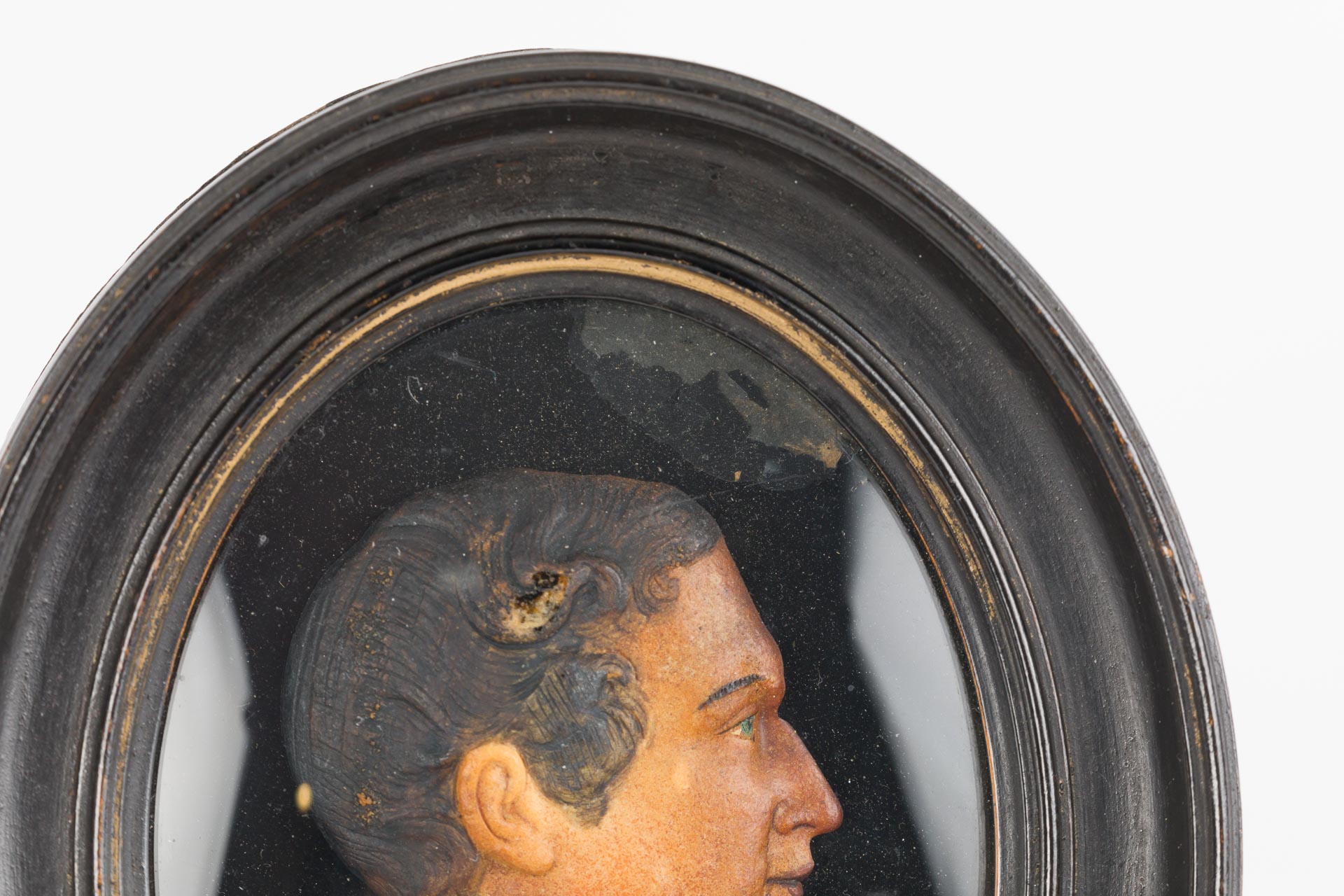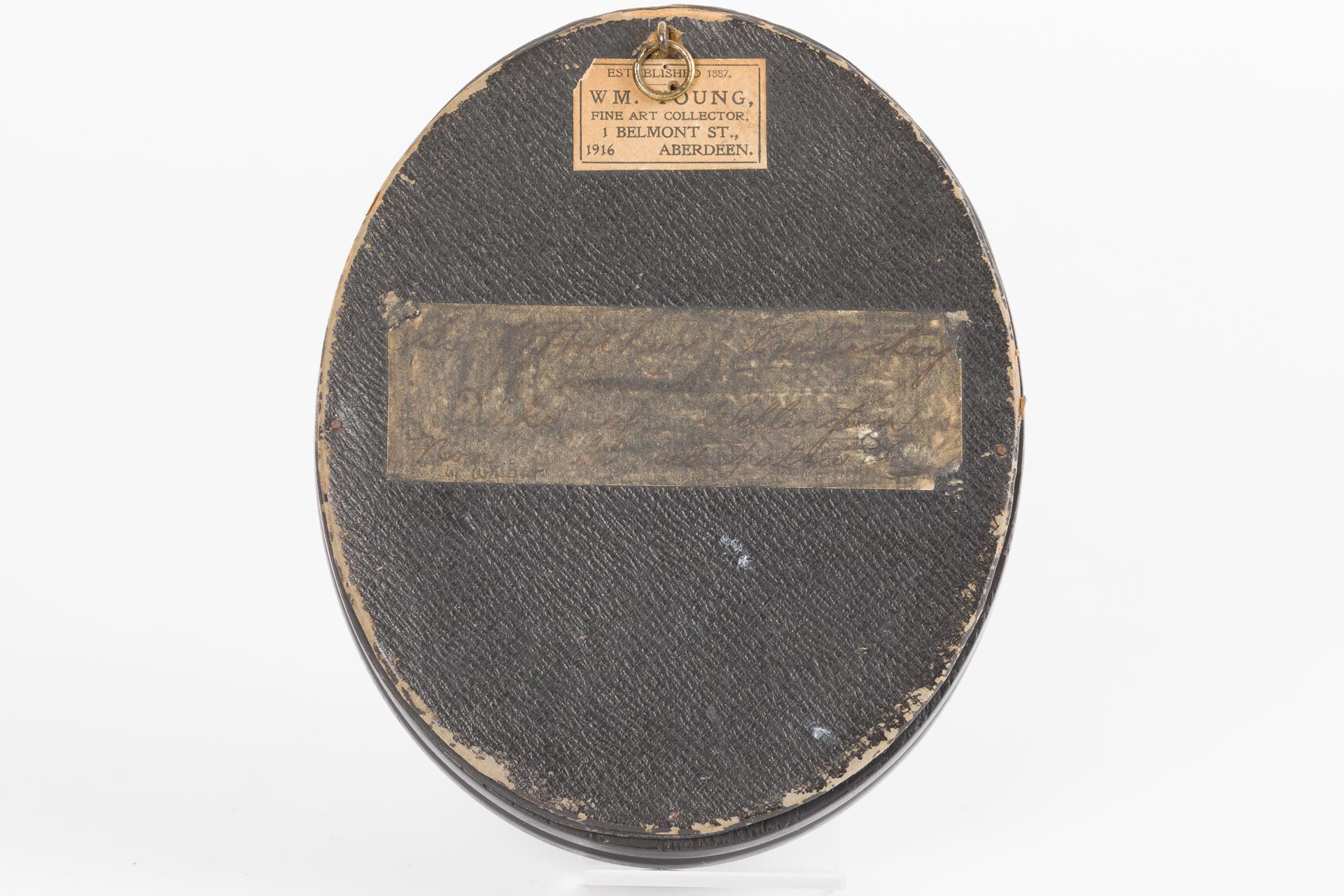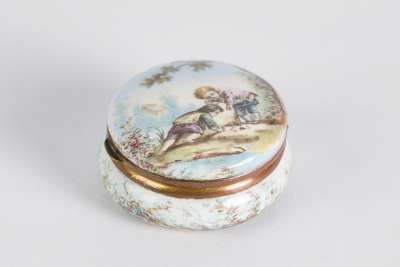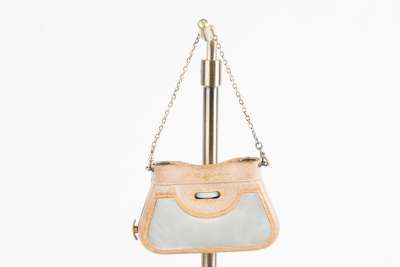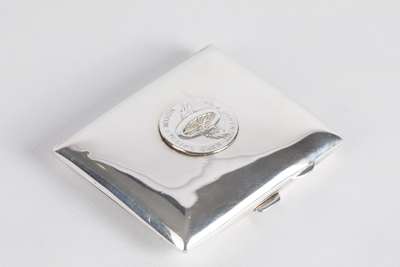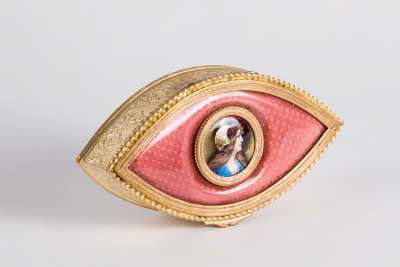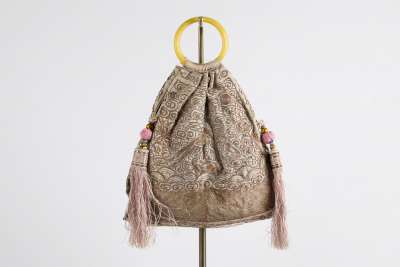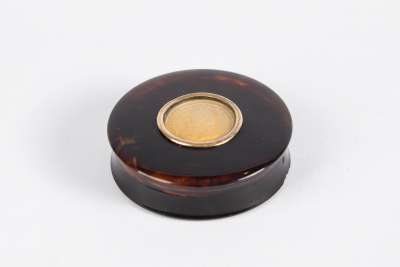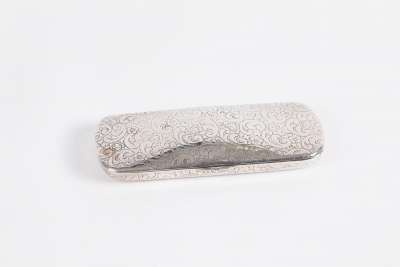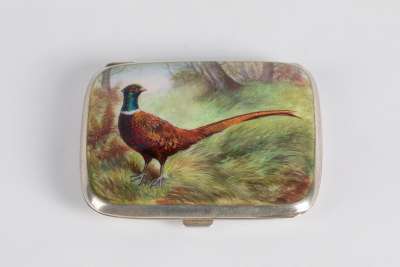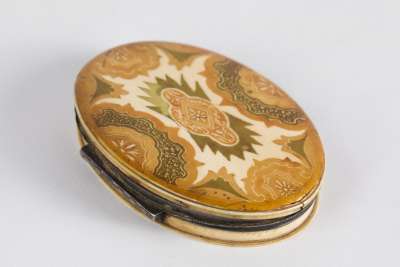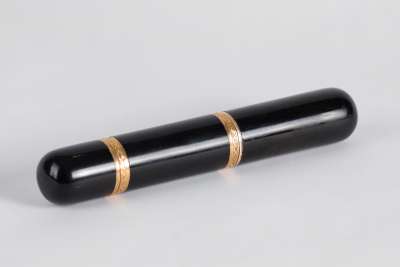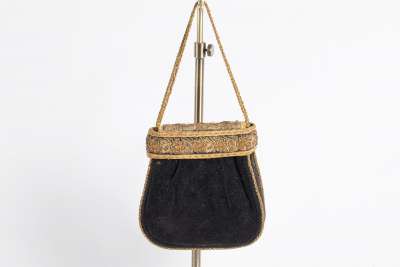This antique wax portrait features a likeness of a young Napoleon Bonaparte, dating to the late Georgian period under King George III, circa 1760-1811. The piece showcases Napoleon in a classical pose, rendered with careful attention to detail that captures his youthful countenance. Crafted in the United Kingdom, this portrait exemplifies the refined artistic techniques of the era. The wax is set against a dark background, providing a striking contrast that highlights the portrait's intricate detailing.
Condition Report
The wax portrait of Napoleon shows wear consistent with its age and historical use. The surface of the wax exhibits minor abrasions, which are typical for such an item from the late Georgian period. The surrounding frame, likely original, displays signs of ageing, including slight discolouration and minor scratches that do not detract from the overall appearance. The glass cover remains intact, protecting the wax from further wear. This piece, while showing its historical journey, remains a testament to the craftsmanship of its time.
Dimensions
Weight: 240gm, Length: 13.5cm, Width: 17cm, Height: 2.5cm.
A Regal Decorative Piece
Originally intended as a decorative piece, this wax portrait would have been displayed prominently in a Georgian home, likely as part of a collection showcasing notable figures of the time. Such portraits were popular among the gentry, who admired Napoleon's military prowess and political acumen. This piece would have served as a conversational focal point, reflecting the host's awareness of contemporary European events and figures.
Georgian Artistic Style
This wax portrait is an excellent example of Georgian artistic style, characterised by its classical influences and attention to detail. During this period, portraiture was a prominent art form, capturing both the likeness and essence of the subject. The use of wax as a medium allowed artists to achieve a high level of detail and realism, traits highly valued in Georgian art. The framing style and colour palette reflect the tastes of the upper classes during the late 18th to early 19th century, showcasing a preference for elegance and sophistication.
The Craft of Wax Portraiture
The creation of wax portraits was a meticulous process, involving the careful sculpting of wax to render lifelike images. Artists would begin by modelling the portrait in clay before casting it in wax, allowing for fine details to be captured. The wax was often coloured to enhance realism, with additional materials like hair or fabric occasionally used to augment the piece. This process required significant skill and patience, as wax is a delicate material that can easily be damaged during handling.
Crafted by Skilled Artisans
While the specific artist of this wax portrait remains unknown, it is likely the work of a skilled artisan familiar with the techniques and materials popular during the late Georgian period. Such artisans were often commissioned by wealthy patrons to create likenesses of prominent individuals, serving both decorative and commemorative purposes. This particular piece reflects the high level of craftsmanship expected by patrons of the time, highlighting the artisan's ability to capture both detail and expression in wax.
Collected by Enthusiasts of Historical Portraiture
Wax portraits like this one are coveted by collectors who appreciate historical portraiture and the unique medium of wax. Collectors are drawn to the intricacy and realism that wax allows, as well as the historical context of the figures depicted. Such pieces offer a tangible connection to the past, allowing enthusiasts to own a piece of history that portrays iconic personalities. This portrait of Napoleon, a figure of enduring interest, is particularly appealing due to its representation of a significant historical era and personage.

